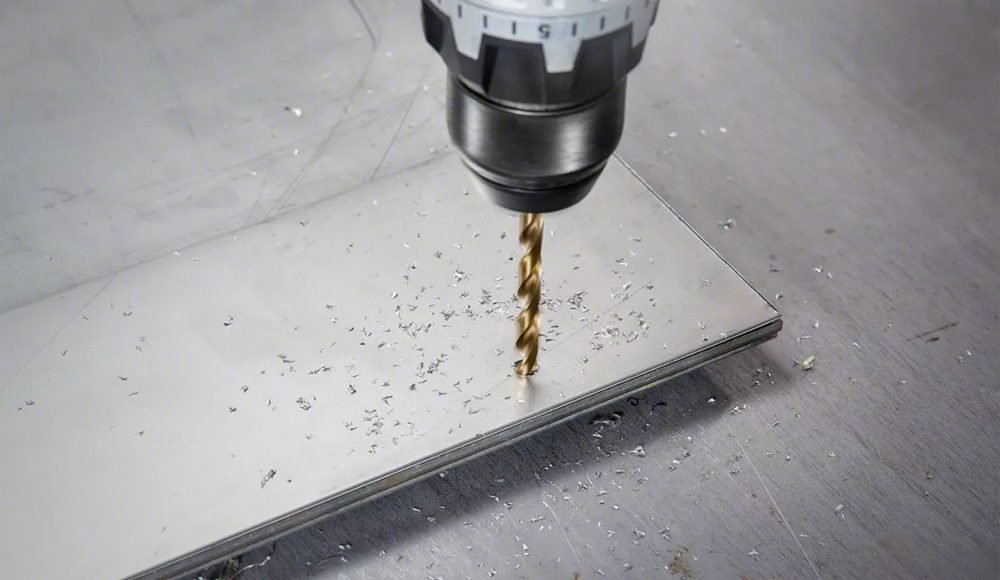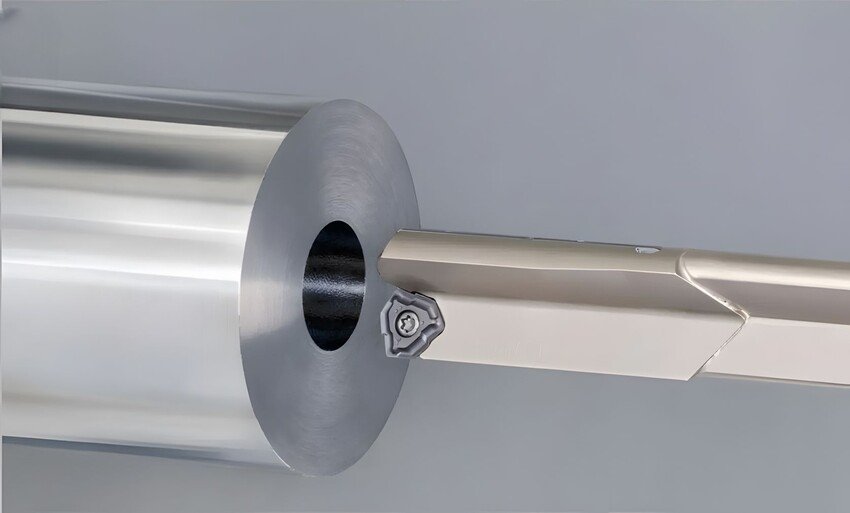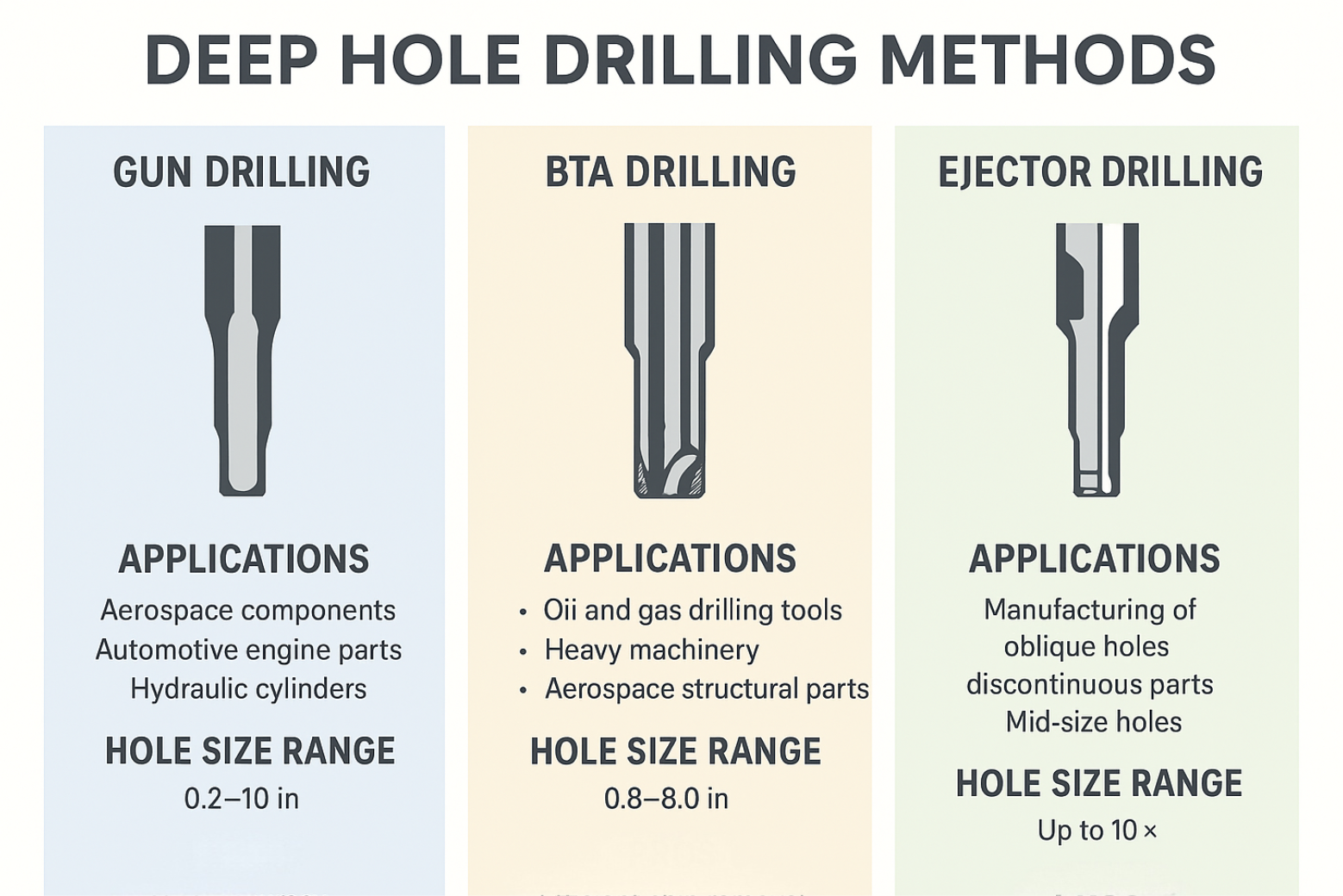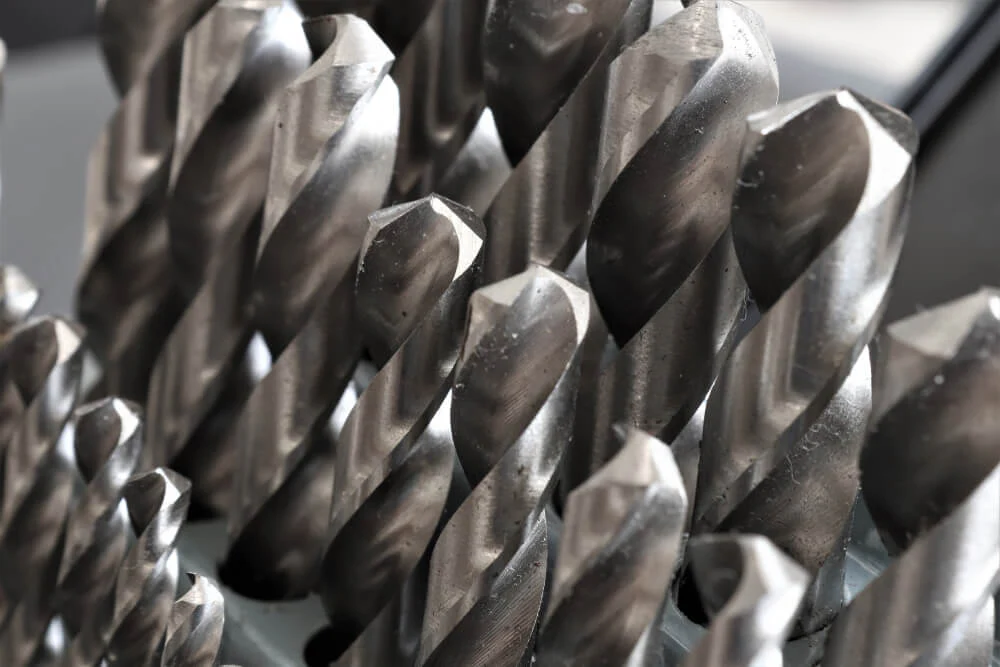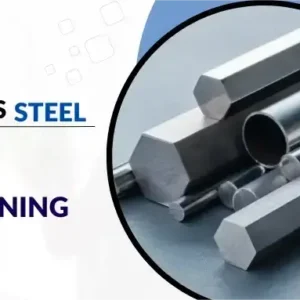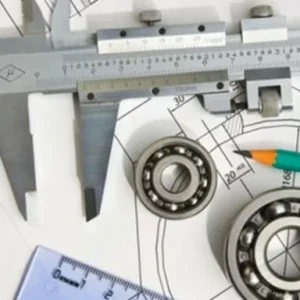Le forage des trous profonds peut ressembler à un processus hautement spécialisé, Et c'est parce que c'est. Contrairement au forage standard, où la profondeur du trou est relativement peu profonde, Le forage des trous profonds est conçu pour créer des trous avec un Ratio de profondeur / diamètre 10:1 ou plus. Cette technique est largement utilisée dans les industries où la précision, force, et la fiabilité sont essentielles - comme l'aérospatiale, automobile, huile & gaz, Et même les dispositifs médicaux.
Dans cet article, Nous plongerons dans ce qu'est le forage de trou profond, Pourquoi c'est important, les différentes méthodes utilisées, Les défis impliqués, et des solutions pratiques. À la fin, Vous aurez une compréhension complète de la façon dont ce processus alimente certaines des technologies les plus avancées du monde.
Qu'est-ce que le forage des trous profonds?
À la base, Le forage des trous profonds est un processus d'usinage conçu pour produire précis, droit, et nettoyer les trous qui sont nettement plus profonds qu'ils ne sont larges.
Définition: Un trou est considéré comme un «trou profond» lorsque sa profondeur est au moins 10 fois son diamètre (10:1 rapport).
Origine: Historiquement, Le processus a commencé avec la fabrication de barils d'armes à feu, qui exigeait longtemps, droit, et des alésages très précis. C'est pourquoi le forage des armes à feu est toujours l'une des techniques les plus courantes.
Utilisation moderne: Aujourd'hui, Les mêmes principes s'appliquent aux industries comme l'aérospatiale (composants du moteur), automobile (injecteurs de carburant, vilebrequins), et de l'huile & gaz (outils de forage et pipelines).
Le forage des trous profonds assure intégrité structurelle, performances lisses, et haute précision où les méthodes de forage normales échouent.
Importance du forage des trous profonds dans les industries modernes
Aéronautique et Défense
Dans l'aérospatiale, Les matériaux légers mais forts sont cruciaux. Le forage de trou profond est utilisé pour produire des composants comme train d'atterrissage, systèmes hydrauliques, Et même les systèmes d'armes. La précision n'est pas négociable car même les erreurs mineures peuvent affecter les performances et la sécurité.
Industrie automobile
Les automobiles s'appuient sur le forage des trous profonds pour des composants tels que:
Injecteurs de carburant (minuscule, trous précis pour le débit de carburant)
Vilebrequin & Arbres à cames (Passage du pétrole pour la lubrification)
Cylindres hydrauliques (Utilisé dans les systèmes de direction et de freinage)
Ici, La durabilité et la précision influencent directement l'efficacité du moteur et la fiabilité du véhicule.
Huile & Industrie du gaz
Dans l'exploration et le forage pétroliers, Les outils et les tuyaux ont souvent besoin forages longs qui peut résister aux conditions difficiles. Le forage des trous profonds assure force, fiabilité, et résistance à l'usure dans des composants comme les têtes de forage et les instruments pétroliers.
Ingénierie & Applications médicales
Dans systèmes hydrauliques, long, Des trous droits sont nécessaires pour le contrôle de la pression et le débit de fluide lisse.
Dans Équipement médical, comme les instruments chirurgicaux, Le forage des trous profonds garantit que les composants sont tous les deux minuscule et très précis pour des opérations sûres.
Avantages clés du forage des trous profonds
Haute précision - la capacité de forer droit, trous précis sur de longues profondeurs.
Finition de surface améliorée - Les murs lisses réduisent les frottements et l'usure dans des applications critiques.
Efficacité & Vie de l'outil - Les conceptions spécialisées des perceuses et la livraison de liquide de refroidissement prolongent la durée de vie de l'outil et réduisent les coûts.
Polyvalence - peut gérer une large gamme de matériaux, des aciers aux superalliages.
Techniques communes dans le forage des trous profonds
Forage d'armes à feu
Meilleur pour le petit diamètre, trous droits.
Produit une excellente précision et une finition de surface.
Commun dans la fabrication d'armes à feu, pièces aérospatiales, et les systèmes de carburant automobile.
BTA (Association de Boring and Trepanning) Forage
Utilisé pour les plus grands diamètres de trou.
Un système à tube unique supprime efficacement les puces à travers le centre.
Idéal pour l'huile & gaz, machinerie lourde, et parties structurelles aérospatiales.
Forage d'éjecteur
Fonctionne avec un système à double tube.
Offre de la flexibilité et peut être utilisé sur les centres d'usinage standard.
Parfait pour les trous de taille moyenne où la vitesse de production est importante.
Considérations pour les outils et l'équipement
Pour obtenir les meilleurs résultats, Plusieurs facteurs ont besoin d'attention:
Sélection de foret: Choisir le bon morceau (perceuse à canon, BTA, ou éjecteur) Pour le matériau et la taille du trou.
Systèmes de refroidissement: Les liquides de refroidissement à haute pression sont essentiels pour éliminer les puces et prévenir l'usure des outils.
Capacités de machine: Des machines spécialisées avec des configurations rigides sont souvent nécessaires pour éviter les vibrations et les désalignements.
Quel type de foret convient au forage à travers le métal?
Quand il s'agit de forer en métal, Tous les bits de forage ne sont pas créés égaux. L'utilisation du mauvais type peut rendre le travail frustrant et même endommager vos outils ou la pièce. C'est pourquoi choisir le perceuse droite est si important.
Acier à haute vitesse (HSS) Perceuses
Ce sont les bits de forage les plus courants et les plus abordables. Ils fonctionnent bien pour des métaux plus doux comme l'aluminium, laiton, et acier doux. Si vous avez juste besoin d'une option de base, HSS est généralement suffisant.
Bits de forage en cobalt
Plus fort que HSS, Les bits de forage en cobalt sont parfaits pour les métaux plus durs comme l'acier inoxydable ou la fonte. Ils peuvent gérer une chaleur plus élevée, Ce qui est génial parce que le perçage à travers des métaux plus durs crée plus de friction.
Bits de forage en carbure
Ce sont les champions lourds. Les bits en carbure sont extrêmement difficiles et peuvent couper des métaux vraiment durs, Mais ils sont aussi cassants, ce qui signifie qu'ils peuvent casser s'ils ne sont pas utilisés soigneusement. Ils sont souvent utilisés dans des contextes industriels où la précision et la durabilité sont essentielles.
Bits de forage enduit de titane
Ce sont des bits de forage HSS avec un revêtement en titane. Le revêtement les fait durer plus longtemps en réduisant les frictions et la chaleur. Ils sont un joli terrain d'entente si vous voulez de meilleures performances que le HSS ordinaire sans payer le coût élevé du cobalt ou du carbure.
Défis et solutions dans le forage des trous profonds
Désalignement et rupture d'outils
Problème: Un léger désalignement peut entraîner une déviation ou une rupture de l'outil.
Solution: Utiliser la précision de la précision, repos stable, et les systèmes de surveillance en temps réel.
Stabilité de la pièce
Problème: De longues pièces peuvent vibrer ou se déplacer pendant le forage.
Solution: Sécréter les configurations de serrage et de vibration.
Défis spécifiques au matériau
Problème: Les alliages durs ou les métaux résistants à la chaleur provoquent une usure excessive.
Solution: Utilisez des bits de forage enduits (carbure, Étain, etc.) et optimiser les paramètres d'alimentation / vitesse.
Pourquoi choisir Précision au sommet pour le forage des trous profonds?
Tous les magasins d'usinage ne sont pas équipés pour le forage des trous profonds. Tops Precision fournit:
Compétence - années d'expérience avec des projets de forage complexes.
Haute précision - Équipement avancé et contrôle de la qualité stricte.
Rentabilité - Prix de compétition sans compromettre la qualité.
Partenariat fiable - Engagement à livrer dans le temps et à respecter les normes de l'industrie.
Conclusion
Le forage de trou profond est plus que de faire un trou - il s'agit de créer précis, fiable, et composants hautes performances qui alimente tout, des moteurs à réaction aux outils médicaux. Avec les bonnes méthodes, outils, et expertise, Il ouvre la porte à des possibilités infinies dans toutes les industries.
Si votre projet nécessite Services de forage à trou profond, Le partenariat avec un fabricant qualifié garantit que vous obtenez la précision et les performances dont vous avez besoin.
FAQ
T1: Quelle est la différence entre le forage des trous profonds et le forage normal?
Le forage de trou profond gère les rapports de profondeur / diamètre beaucoup plus élevés (10:1 ou plus), Alors que le forage standard reste généralement sous 3:1.
T2: Quels bits de forage sont les meilleurs pour les trous profonds dans le bois?
Exercices de torsion extra-longs spécialisés ou exercices d'armes à feu conçus pour le travail du bois.
T3: Quel est le rapport de profondeur / diamètre standard pour le forage des trous profonds?
10:1 ou plus, Bien que dans certains cas, ça peut aller bien au-delà 100:1 avec un équipement avancé.
En savoir plus:
Services de fraisage CNC (À titre de comparaison des méthodes de création de trous)
Services d'usinage de précision
Finition de surface pour les pièces usinées
Usinage en acier inoxydable / Usinage titane

